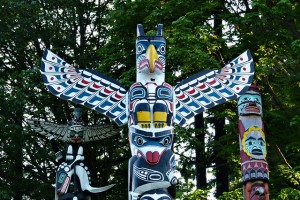Interpreting Treaty Rights: Recognizing the Indigenous Perspective


More than 150 years of disputes over treaty interpretations between the Indigenous populations and federal government have critically characterized Canada’s history. Such conflicts are still making headlines today, as the Indigenous population in Canada continues to call on the government to recognize their historic treaty rights. Recently, the Indigenous populations have been taking advantage of the looming federal election to demand the government do more about climate change. The Harper government’s hasty pipeline development – and what seems like a blatant disregard for protective environmental regulations – has worsened the exploitation of Canada’s oil sands (Mantyka-Pringle et al, par. 2). Indigenous people assert that this is threatening their traditional ways of livelihood and it’s time someone did something about it.
The call to action is an effort to bring attention to the impact non-renewable energy development is having on both the environment and the Indigenous people. Indigenous people assert that recognizing their treaty rights is a step in the right direction for tackling climate change (Mantyka-Pringle et al, par. 3). The claim is that the right the Indigenous populations have to their traditional livelihood – such as hunting, fishing, and trapping – was recognized in the series of treaties established between them and the government in the mid to late nineteenth century (Mantyka-Pringle et al, par. 3). These rights were once again recognized in Canada’s 1982 Constitution. However, such rights have remained up to the discretion and interpretation of the judicial system, and this has been anything but satisfactory.
The exploitation of the oil sands is destroying Canada’s natural environments, which directly impedes upon Indigenous people’s ability to pursue their traditional livelihood. Mantyka-Pringle et al. explain in their article “Honour Treaty Rights, Counter Climate Change: Opinion” for the Edmonton Journal, “Oil sands exploitation in northern Alberta is an excellent example: It constitutes a de facto breach of the rights guaranteed in Treaty 8. Habitat destruction has caused declining populations of woodland caribou and other species used for subsistence. Air, water, soil, game, plants and fish are being contaminated with mercury and other toxins emitted by the oil sands industry, jeopardizing human health” (par. 3).

But the issue of treaty rights goes beyond judicial interpretation: Indigenous peoples have long asserted that the written text of treaties do not accurately reflect what was agreed upon during treaty negotiations. Indigenous people did not have the tradition of writing down their demands during the time when they were historically agreed upon. Instead, they relied on their own traditional methods to remember and preserve such important information – and these are the methods we need to consider. When we do, we will see that they did not surrender all of their rights to the government and, thus, Canada needs to work in order to respect the rights they left treaty negotiations with.
Sharon Venne, in “Understanding Treaty 6: An Indigenous Perspective”, asks readers to consider Indigenous oral histories in order to understand their perspective. Venne writes, “In an oral culture, the means of passing on information is via story telling. […] That is not to say someone makes up a story, but a story is the manner in which the information is told” (174). Oral histories are both a skill and art form to Indigenous people. Elders pass down their accounts of past events in order to educate the next generation of their history. Many Elders know different parts to a story so, when they are told in conjunction with each other, they will flow together to demonstrate the factuality of the story. According to their oral histories, Venne explains that the Indigenous peoples agreed to share their land with the colonists, not sell it (191).
Oral histories explain that there are words in the written treaties that were never mentioned during their verbal negotiations. According to Venn, “the written version contains wording [such as] ‘cede, surrender, and forever give up title to the lands.’ […] These words were not included in the original treaty” (192). There were no equivalents of these types of words in many Indigenous languages, so Indigenous people could not have properly understood the meaning (Venne, 192). More so, the written treaties contain sacrifices Indigenous people say they never agreed to. There is an obvious discrepancy between what the Indigenous people thought they were giving and receiving and what was actually written.
With that being said, it cannot be denied that the government has the advantage in a legal sense because they do have written documentation. In the Canadian judicial system, a legally binding document is considered more reliable than a witness testimony. Witness testimonies are not the most reliable form of evidence – there is always the question of accuracy over the ability of someone to recall specific information as well as the question of whether they are being honest or not. Indigenous oral histories may constitute a traditional, reliable practice, but proving that this is more dependable than a legal document is a hard case to win. It’s easy for oral histories to be dismissed as merely stories of times past, not the factual histories they are said to be. This difficulty adds to the reasons why Indigenous people are still fighting for their proper treaty rights to be recognized by the government and why these issues are still making headlines today.
Works Cited:
Mantyka-Pringle, Chrystal, David Schindler, Clinton Westman, and Andrew Kythreotis. “Honour Treaty Rights, Counter Climate Change: Opinion.” Edmonton Journal. N.p., 10 Oct. 2015. Web.
Venne, Sharon, “Understanding Treaty 6: An Indigenous Perpective”, in Michael Asch (ed.), Aboriginal and Treaty Rights in Canada: Essays on Law, Equality, and Respect for Difference. Vancouver UBC Press.
Featured Image via Pixabay.
